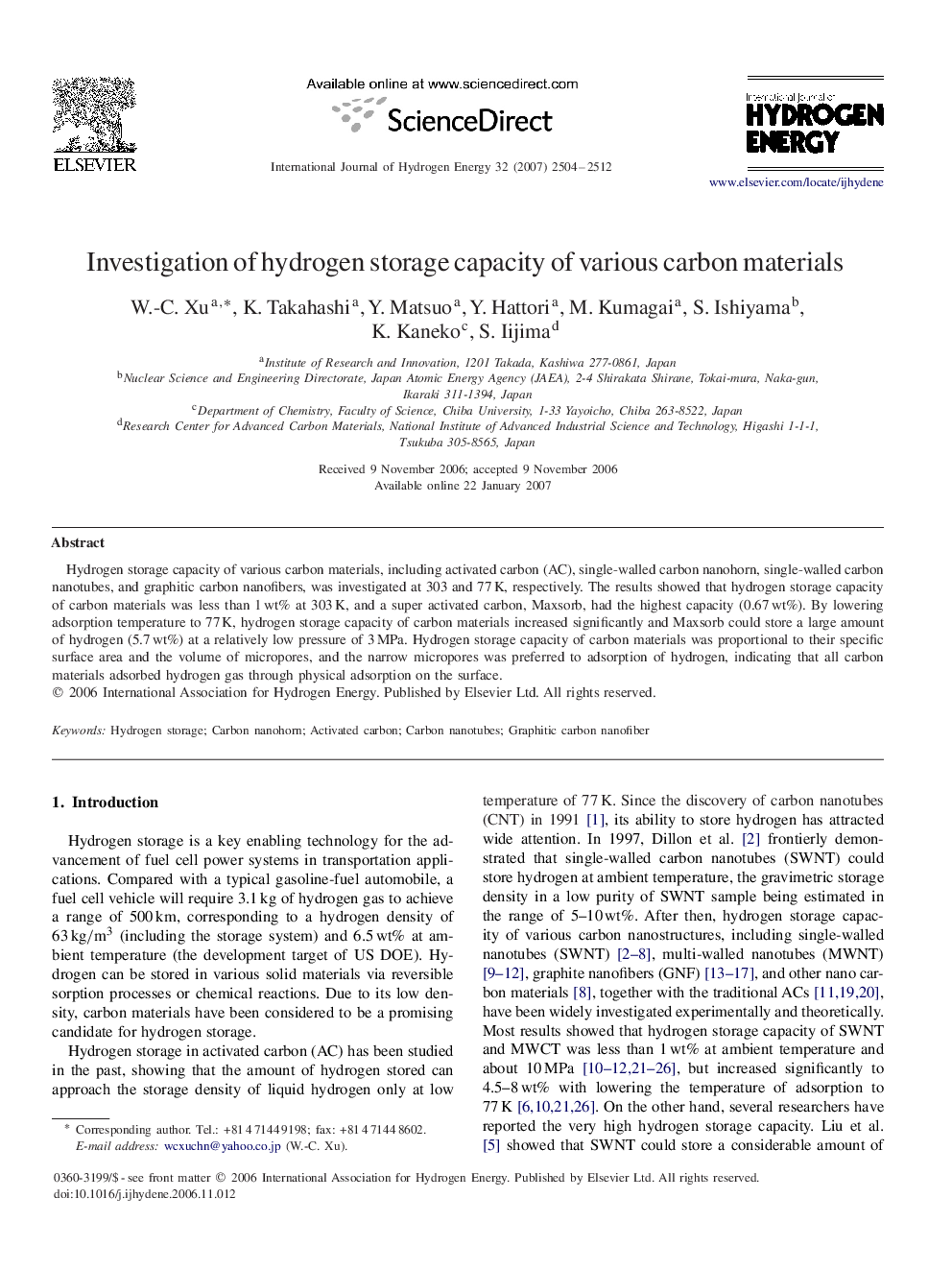| Article ID | Journal | Published Year | Pages | File Type |
|---|---|---|---|---|
| 1280362 | International Journal of Hydrogen Energy | 2007 | 9 Pages |
Hydrogen storage capacity of various carbon materials, including activated carbon (AC), single-walled carbon nanohorn, single-walled carbon nanotubes, and graphitic carbon nanofibers, was investigated at 303 and 77 K, respectively. The results showed that hydrogen storage capacity of carbon materials was less than 1 wt% at 303 K, and a super activated carbon, Maxsorb, had the highest capacity (0.67 wt%). By lowering adsorption temperature to 77 K, hydrogen storage capacity of carbon materials increased significantly and Maxsorb could store a large amount of hydrogen (5.7 wt%) at a relatively low pressure of 3 MPa. Hydrogen storage capacity of carbon materials was proportional to their specific surface area and the volume of micropores, and the narrow micropores was preferred to adsorption of hydrogen, indicating that all carbon materials adsorbed hydrogen gas through physical adsorption on the surface.
